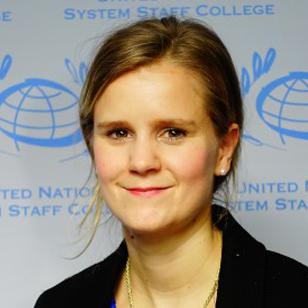Is it worthwhile partnering with foundations? Yes, but don’t expect their money
The preliminary results of a new OECD survey show that philanthropic giving represents only about 1.4% of the total flows from OECD countries to support development. In other words, philanthropic contributions are only a tiny portion of the finance pie. In fact, remittances, official development assistance and foreign direct investment together constitute over 90% of the total flows. Foundations disbursed USD 19.5 billion for development between 2013 and 2015, or an average of USD 6.5 billion a year. Given these statistics, the question arises as to why the perception about philanthropic financial resources is so far from reality? Could it be because one big name, the Bill and Melinda Gates Foundation (BMGF), regularly makes headlines by pledging huge amounts to development work and, therefore, gives a lot of visibility to the philanthropic sector? Indeed, of the USD 19.5 billion in foundation disbursements mentioned above, the BMGF disbursed USD 11.6 billion or 60% of that total.
Largest foundations working for development per region, USD million, 2013-15

The second biggest philanthropic – and first biggest European – donor lies far behind: the Children’s Investment Fund Foundation’s (CIFF) contribution only amounted to USD 748 million in 2013-2015. What’s more, the BMGF was the third donor worldwide in 2014 to the health and reproductive health sectors, right after the United States and the United Kingdom (OECD DAC statistics). As such, the BMGF is in a league of its own, with resources closer to that of a country.
Only when the misconceptions about the largesse of foundations are dispelled, we are able to reap benefits of establishing partnerships with foundations. The first and foremost advantage of partnering with foundation is that, they possess a capacity for innovation and risk-taking that most development players do not have. They operate with greater freedom and flexibility, as they are not bound by electoral cycles nor expected to deliver immediate financial results, unlike governments and private companies. Foundations have the ability to test innovative models that can be scaled up by partnering with other players once they prove successful. For example, the Novartis Foundation developed a 24 hour-teleconsultation centre in Ghana to improve access to health and emergency transport in rural and remote areas. This model is currently implemented in three regions and expected to be scaled up throughout the whole country.
Secondly, foundations have the ability to leverage additional funding, including from bigger foundations and the private sector. Foundations linked to a corporation or a wealthy individual can easily build upon their brand names to enhance their impact. For example, FHI Foundation provides annual grants for its FHI 360 programme which stimulates innovations. These grants enable entities to scale up their work as they can later apply for additional funding from governments and other foundations.
Thirdly, foundations have a strong convening power as they are often viewed as neutral players between governments, private sector and civil society. The Ayrton Senna Institute in Brazil, for instance, gathered municipal and state departments of education, Procter & Gamble and Instituto Natura to design and test an educational model to fulfil student potential by teaching social and emotional skills.
These examples reflect the benefits of foundations when viewed as development partners. Just as achieving the Sustainable Development Goals (SDGs) requires shifting away from business as usual, tapping the true potential of foundations also demands new ways of thinking. Owing to the prevailing misconceptions about foundations, especially related to their financial capacity, organisations like the Network of Foundations Working for Development (netFWD) at the OECD Development Centre aim to foster dialogue and enhance mutual knowledge between foundations and the international community.
In the nutshell, there are many reasons to partner with foundations. Money is not one of them. Now is the time to explore these other reasons in order maximise the benefits of partnering with foundations to be able to advance sustainable and inclusive development for all.
Ms. Emilie Romon was a speaker in the Building Partnerships for Sustainable Development course of the UNSSC Knowledge Centre for Sustainable Development. You may register for upcoming sustainable development courses. Next course on the topic of partnership for sustainable development is the UN-Private Sector Partnerships. Please email sustainable-development@unssc.org for more information.
